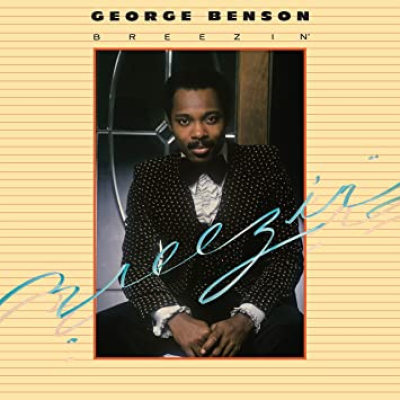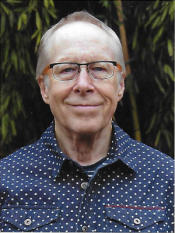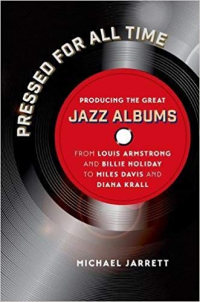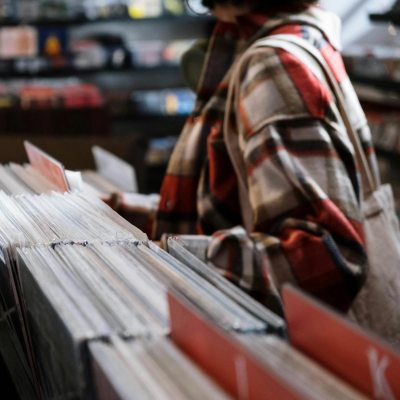.
.
…..Drawn from interviews with prominent producers, engineers, and record label executives, Michael Jarrett’s Pressed For All Time: Producing the Great Jazz Albums is filled with interesting stories behind some of jazz music’s most historic, influential, and popular recordings. In cooperation with Jarrett and University of North Carolina Press, Jerry Jazz Musician will occasionally publish a noteworthy excerpt from the book, which is now available in trade paperback.
.
.
In this edition, producer Tommy LiPuma talks with Jarrett about working with guitarist George Benson on his 1976 Warner Brothers recording Breezin’
.
.

.
.
___
.
.
Tommy LiPuma was an American music producer whose 50-year career in the recording industry resulted in the sales of over 75 million albums. He received 33 Grammy nominations, earning five Grammy wins. In 1976, when George Benson’s album Breezin’ was recorded, he was an Artist and Repertoire (A&R) staff producer at Warner Brothers. Breezin’ was LiPuma’s first multi-platinum production, and Benson’s recording of “This Masquerade” from this album was his first Grammy. LiPuma died in 2017 at the age of 80.
Click here to read his Wikipedia biography.
.
.
___
.
…..Overall, I think the jazz police never forgave me for taking George Benson from the jazz area to where he became a pop artist. I was always a pop music freak, but I was a big jazz fan. I was a saxophone player. I played professionally for years, until I got into the record business. I was also a big fan of Creed Taylor. He was a big influence on me and on how I made my records.
…..I worked for Liberty Records as a promotion man from 1961, I believe, until ’65, when I went with A&M. In between, I worked for Liberty’s publishing company. They’d bought Lew Chubb’s Imperial Records and had the O’Jays signed. My first production was with the O’Jays, their first record. Jerry Moss and Herb Alpert were close friends of mine, and I joined them at A&M in October of 1965.
…..I was a fan of George’s going way back. The first time I saw him was with Jack McDuff in 1963 or ‘4, at the Jazz Workshop. At the time, I didn’t know who he was or his name. So the first time I really heard him was on a record he’d done on Verve that Esmond Edwards had produced (Giblet Gravy, 1968). I remember Herbie Hancock was on the album, on a version of “What’s New.” I was really taken by George. I was a big Wes Montgomery fan, among other great guitar players. But this guy really grabbed me.
…..I bought his albums on Creed’s label (CTI): White Rabbit, The Other Side of Abbey Road, and so on. But for some reason or another I’d never heard him sing. I missed those cuts. Somewhere around 1973, I was in San Francisco doing an album. Al Schmitt, who was still producing at the time, he hadn’t gone back into engineering, he and I were close friends. We shared a hotel suite at the Miyako Hotel in San Francisco.
…..Al was working with the Jefferson Airplane; I was working with Dan Hicks and His Hot Licks. After work one day, we were riding by the Keystone Korner. I looked up, and the marquee read “George Benson.” I stopped the cab and said, “We’ve got to check this out.” We went to hear George play, and that was the first time I heard him sing. He sang “Summertime,” which he’d done on a Columbia album that I didn’t know. It struck me, “This guy can really sing.” We stayed for the set. I didn’t introduce myself. I split.
…..At that time in 1973, I was partners with Bob Krasnow in a small record company called Blue Thumb. We sold the company in late ’74. I went to Warner Brothers, and about six months later, Bob joined us there as a talent scout. Maybe it was 1976. He called me one day, and he said, “I have a thing here that was made in heaven. I just got a call that wanted to know if Warners was interested in signing George Benson. I thought of you.” I had introduced Bob to George Benson’s music. I had played him a lot of George’s things. So he asked, “Would you be interested?”
…..“Absolutely.”
…..Bob set up a meeting, and I got together with George. The first thing I asked him was how come he hadn’t sung more on his albums? He told me – it was, of course, his conjecture – that Creed was trying to make him the next Wes Montgomery. Wes had died by that time. Creed wasn’t enthusiastic about recording him as a vocalist. I said, “I saw you about three or four years ago at the Keystone Korner. I thought your voice was fantastic. I think you should sing more on your albums.”
…..As it turns out, he signed with us, and then we got together. The amazing thing is he left the looking out for the material and the casting of the material up to me. I came up with all of the songs. It just so happened that I knew Leon Russell very well, and I was familiar with his song “This Masquerade.” I told George, “Look man, it’s a great song. If we’re going to do something…” But even before that, I’d said, “I don’t think that we should go in and do just a bunch of vocals. If we find something that’s really great, we’ll do it.” I’d found one. He loved the song. We recorded it.
…..There were six cuts on the Breezin’ album. Five were first takes. I’d also done some stuff with Bobby Womack and Gabor Szabo. This was when I was with Blue Thumb. There was an album I did with Gabor called High Contrast (1971), where a friend of mine, Jim Keltner, a great drummer, he mentioned, “You know, there’s this friend of mine, Bobby Womack. You ought to check him out.” I did, and I thought, “This guy’s a great rhythm player, and he writes good stuff.” So I had him on this Gabor Szabo date, playing guitar. Bobby wrote this thing called “Breezin’,” which we recorded with Gabor. Nothing happened with the album, but there was something about it that kept my interest. It turns out we ended up doing that tune again. I had Bobby Womack come down and play rhythm guitar. But Breezin’, the whole album, took only three days.
…..Claus Ogerman, the gentleman who did all of the string arrangements, was also a close friend of mine. He was spending six months of the year in Munich, Germany, at his home, and six months in New York. When I called him to do the arranging, he said, “Geez, I’d love to do it, but I’m leaving for Munich.”
…..“Hey,” I said, “we’ll come there.”
…..By that time, Al Schmitt was doing all of my engineering. Al and I took the tapes, flew to Munich and did the strings there.
…..Michael Jarrett: To what do you attribute the quick recording time?
…..George nailed it, but we did have several days of rehearsal before recording. I’m really – I don’t want to use the word stickler, but in a sense I am. Preproduction is very important. We rehearsed and went in ready.
…..I don’t necessarily have rehearsals on every album that I’ve done. But we do have preproduction meetings. Everyone, or at least the artist, has a good idea what we’re going to do and how we’re going to approach it. A lot of times when we go into the studio, we don’t have arrangements so to speak; in fact, very seldom do we have rhythm arrangements. We go in with a sense of what we’re going to do, though we may have only a chord sheet to follow. Then, once we get in there, we work on how best to do it, but we have a good sense of the road we’re going to take when we start.
.
.
___
.
.
Listen to George Benson perform “This Masquerade”
.
.
_____
.
.
From Pressed for All Time: Producing the Great Jazz Albums from Louis Armstrong and Billie Holiday to Miles Davis and Diana Krall. Copyright © 2016 by Michael Jarrett. Published by the University of North Carolina Press. Used by permission of the publisher. www.uncpress.unc.edu
.
.
___
.
.
photo by Pamela Jarrett

Most of Michael Jarrett’s writing on jazz production appeared in Pulse!, Tower Records’ magazine. His day job, however, was professor of English at Penn State University (York Campus). In addition to .Pressed for All Time, his book about jazz record production, Jarrett wrote. Drifting on a Read: Jazz as a Model for Writing; .Sound Tracks: A Musical ABC; and .Producing Country: The Inside Story of the Great Recordings. He is now retired. He and his wife live in the village of Ojochal, on the southern Pacific coast of Costa Rica.
.
.
.



































Just saw in June 2024 the stellar new interview of George with Rick Beato on YouTube. He talked in detail about recording this album, the songs, the players, the atmosphere-everything. Search it out of use the link below. The title is George Benson: The Greatest Guitar/Singer of All Time.
https://youtu.be/FrkvnzdKObY?si=NH5tQM4FElvrd63a